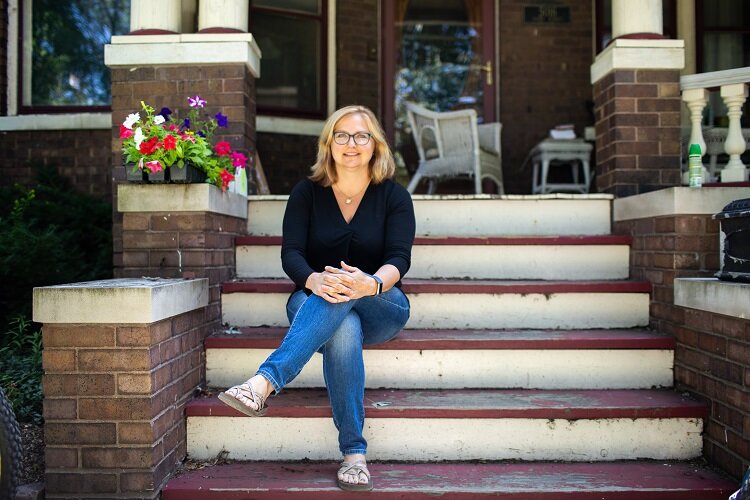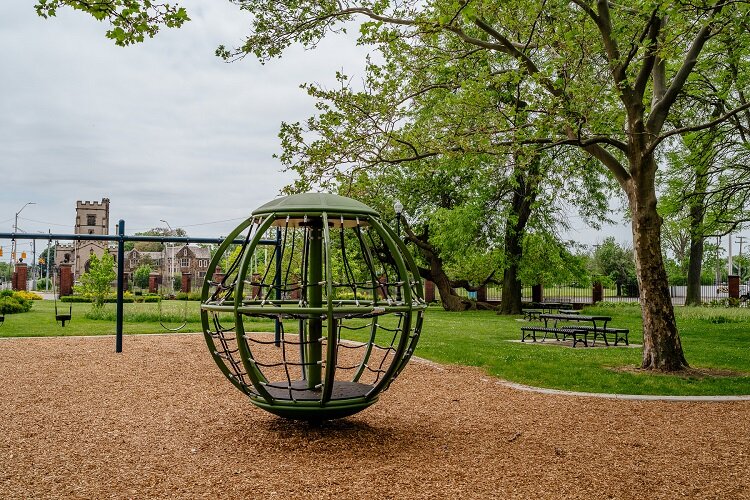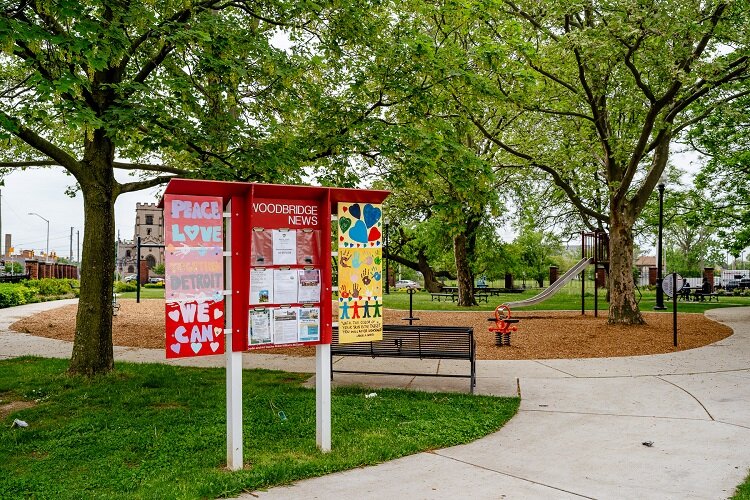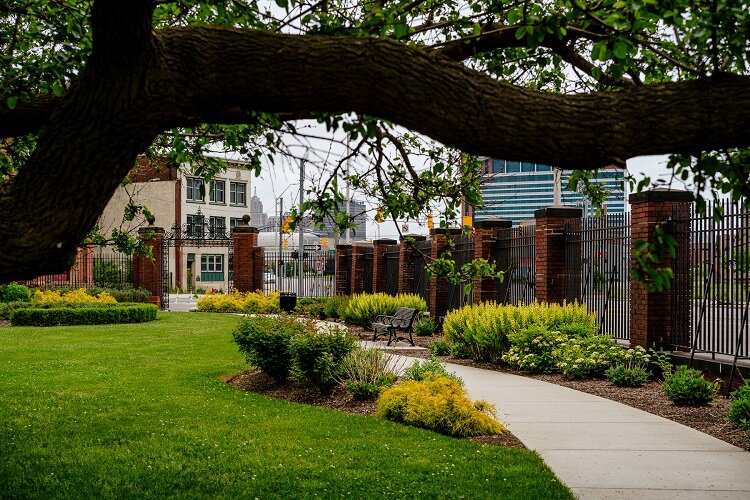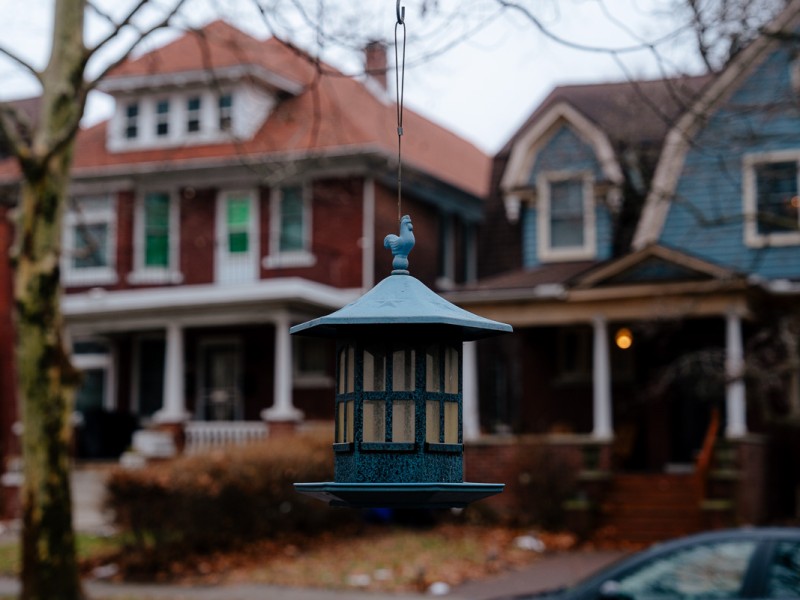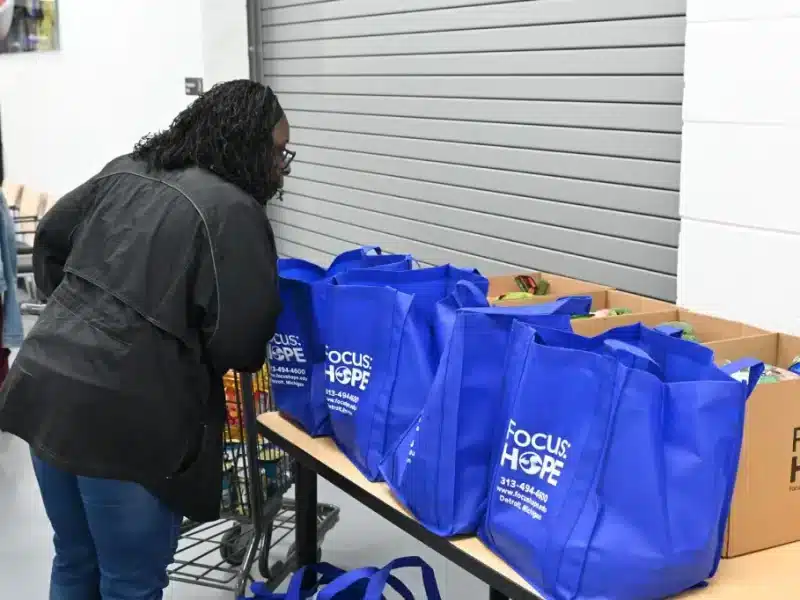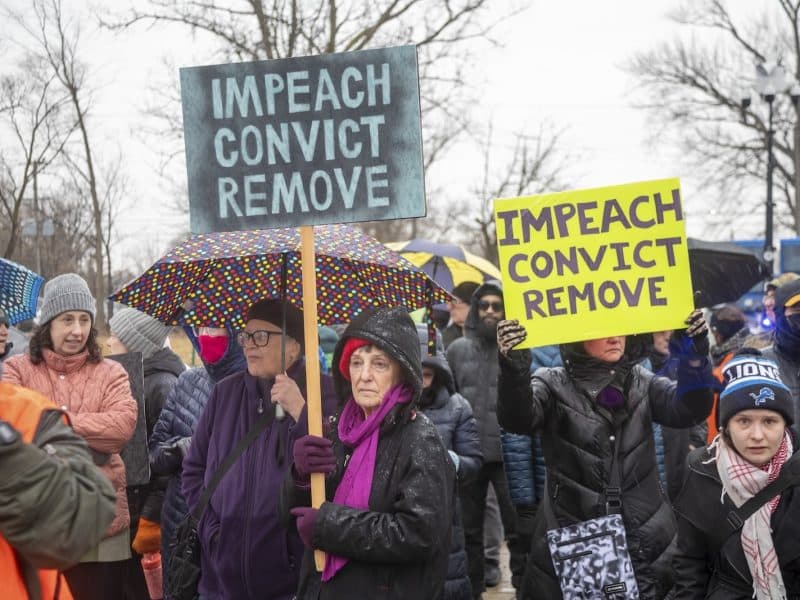Resilient Neighborhoods: Angie Gaabo speaks on efforts to preserve diverse housing in Woodbridge
Woodbridge Neighborhood Development has made preserving and promoting diverse housing a priority. Here's why.
This is part of a series of Q&A interviews with Detroit nonprofit directors connected to our Resilient Neighborhoods series. Angie Gaabo is the executive director of Woodbridge Neighborhood Development.
Model D: Could you tell us a little about your organization, Woodbridge Neighborhood Development?
Angie Gaabo: Woodbridge Neighborhood Development was established in 2002. It’s a resident-driven organization. Residents make up the majority of board members and staff and community members to run everything. We focus on a couple of key buckets: public space acquisitions, resident programming, and resident resources. We run programs in our parks and try to collaborate with folks who are providing opportunities for youth and seniors in the area. We do minor home repair and tax foreclosure prevention work to keep people in their homes. and then real estate development, property redevelopment, and vacant land stewardship. We’re a small organization; we only have three full-time staff. But we are small and mighty.
Model D: The way development has been taking place in Woodbridge seems to be a concern for you. What can you tell me about the background of what’s happening in the neighborhood, right now?
AG: The neighborhood is sort of at the nexus of a lot of things that are happening right now. And development is always on the lips of residents who want to be in a

position where they have a voice. Historically, they have had a pretty important role. In the 1960s, 70s, and early 80s, this area saw urban renewal—or removal as many say—lots of housing demolitions that were driven by the city and Wayne State to sort of clear room for bigger projects. The Wayne State Athletics Field used to be housing on the east part of Woodbridge. And further west, a lot of housing was cleared for what was going to be a Detroit Public School athletics campus, which never happened.
During that time, residents really took notice and got active and formed our citizen’s council and pushed back against any further taking of property or development without resident input. Then for many many years, there really wasn’t any kind of new activity in that regard until around five, six, or seven years ago, when there was a lot happening in the downtown and Cass Corridor area. And we were seeing that there’s interest on the part of the private development community in taking a look at the neighborhood and vacant land that exists here.
So neighbors got energized again about being really intentional about planning for ourselves what we would like to see happen here. So in 2019 and 2020, we did a whole lot of land-related planning where we raised some philanthropic money to run a process over here that involved hundreds of people and stakeholders. Now we have a community-based development plan, and we, as an organization, also partnered with Cinnaire Solutions, a community development financial institution, to acquire some of that vacant land and some of the abandoned buildings here and to start down a path of the community itself actually controlling what would happen here.
Keeping the neighborhood a mixed-income, multi-generational community seems to be a very important goal for WND. Why is that such a priority for you?
AG: We have the view that this is the historic nature of [Woodbridge]. The eccentricity, the diversity of people who live here—age, race, income—it’s very mixed. We do a lot of door-knocking here, and you really see that when you’re on
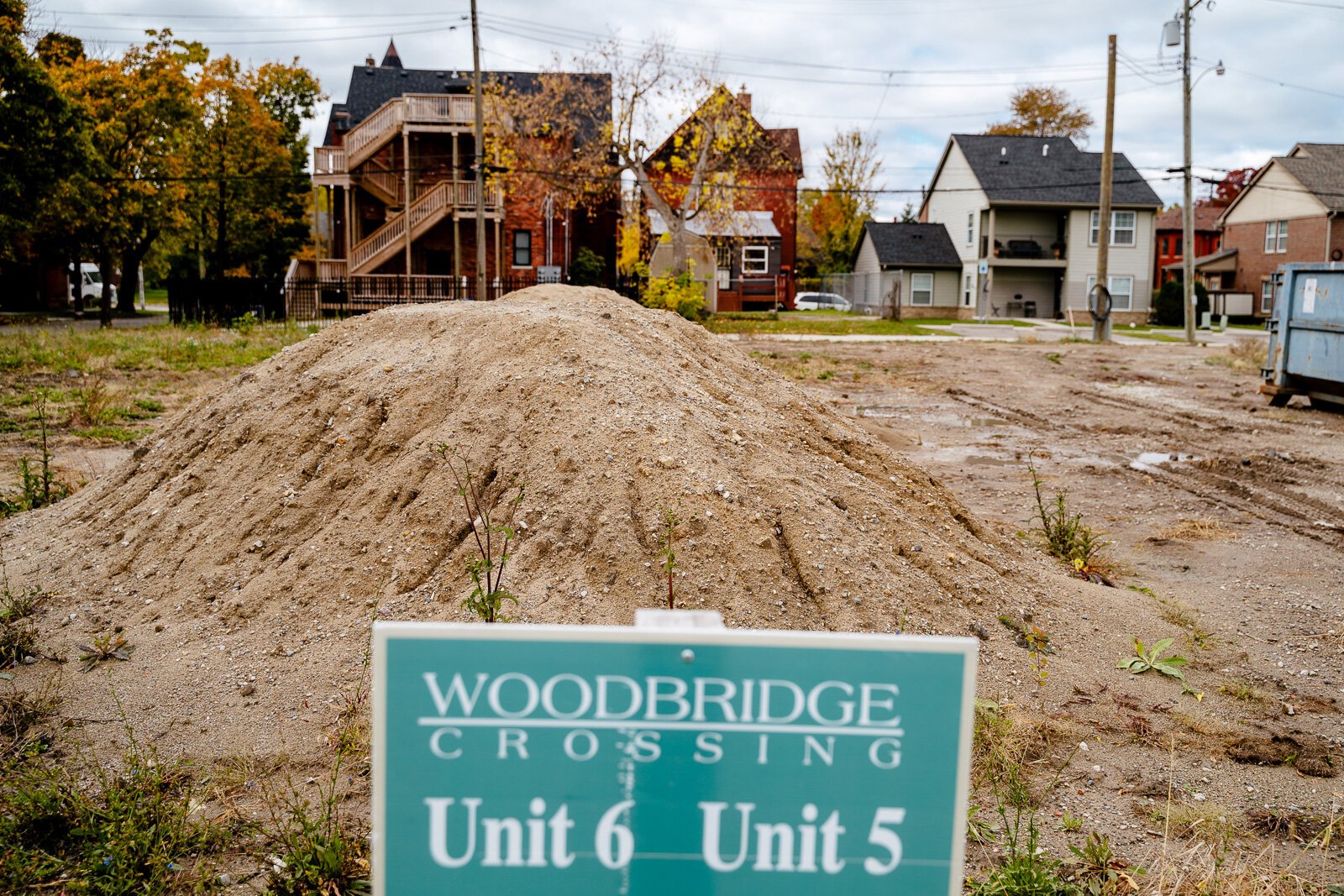
people”s porches. Because of the proximity to the university, there’s always been a student population and an arts community and a lot of musicians here, but also a lot of long-time residents who’ve always been here. And those who are in older homes that need repair, if they can’t figure out how to stay here they leave and then things can quickly turn over. So there’s [a desire] to preserve that diversity that makes the neighborhood unique.
Right now in this neighborhood, it’s difficult to downsize. if you can’t walk up all these stairs anymore, you have to leave the neighborhood, because we don’t have an option. We don’t have smaller homes. We don’t have elevator buildings where you can have a smaller or more affordable place to live. Likewise, if you’re a renting student here, and your like, “OK, I think I want to buy my first house,” you cannot find a home that you can afford, because we have the two extremes. We have rent-restricted apartments and other market-rate apartments and then we have very expensive single-family homes. And the prices have gotten out of control on that side. So there’s nothing in the middle that will help us keep all kinds of residents present and part of the fabric of the neighborhood. So that is where we are putting our energy [into figuring] out how to create what they call middle housing [or] attainable housing, [which has] different sizes and different prices for people in all stages of life.
Model D: What sort of actions are you thinking about taking to preserve or promote this?
AG: On one side, we’ve been working on the preservation of housing stability. We’re helping people with direct grants for home repair with one-on-one assistance for tax foreclosure and other foreclosure preventions. It’s keeping people housed who might otherwise be leaving the neighborhood. Then on the development side, we’re
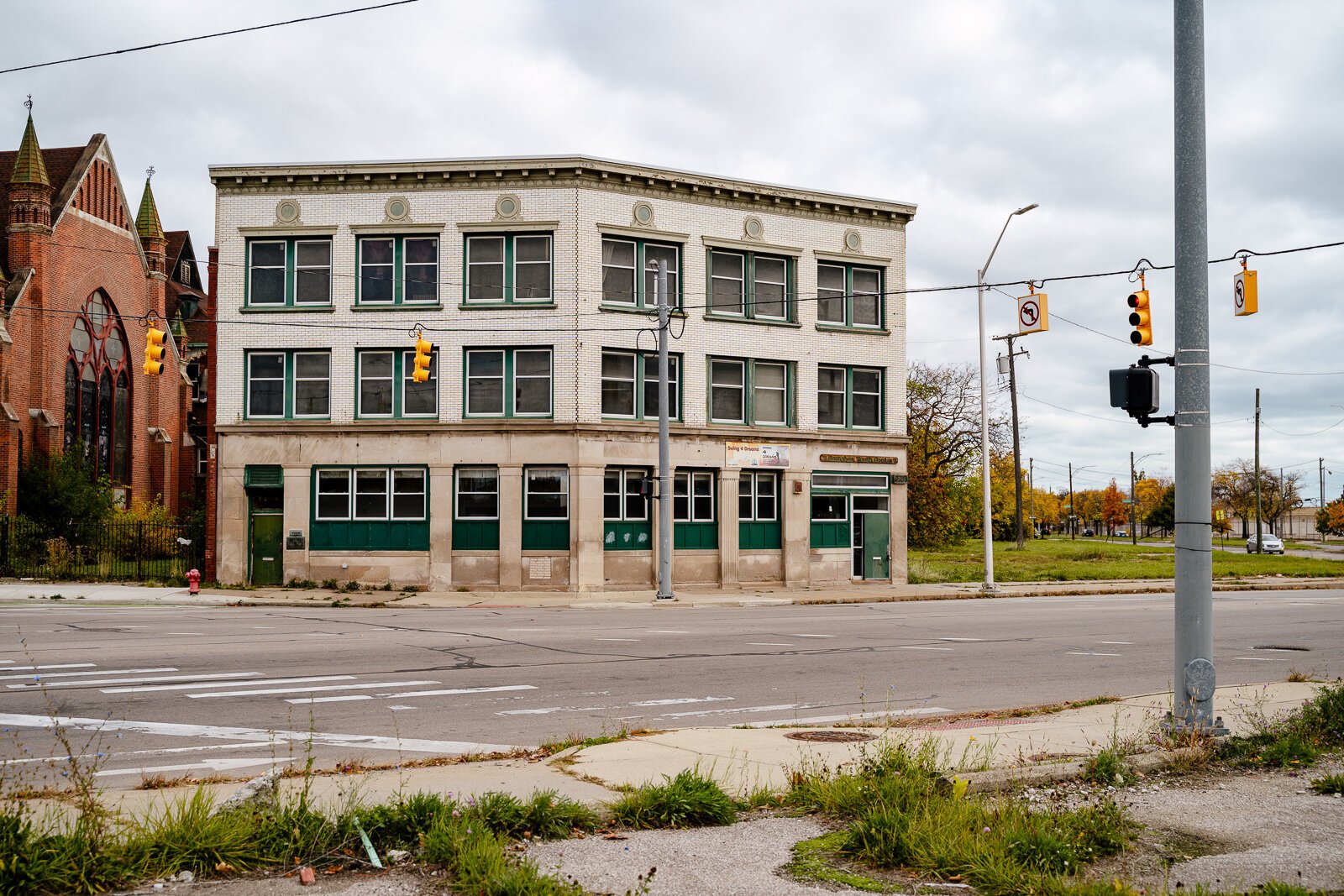
trying to work with Cinnaire Solutions and other development partners who share this passion for finding a type of housing that is maybe a different size. We’re not talking about tiny homes. It’s just a right-sized house, a home, or a townhome that — because it’s smaller — is just naturally more affordable.
We’re [also looking into] bringing in subsidies or philanthropic dollars. And now the state has a new fund for what it’s calling middle housing or workforce housing. [We’re interested in] ways to get that housing built, so there are more options for people. And some of that could occur on vacant land that our organization controls along with Cinnaire Solutions that have been planned for by residents, because those are some of the things that residents said they wanted.
It’s really challenging because if it’s left to the market’s devices, it will be high-priced luxury whatever. But on the other side of that, there’s a well-developed system for building low-income housing, using low-income housing tax credits. You can go that route, but what’s in-between is trickier.
Model D: Any advice for other groups around the city who may be interested in doing this kind of work?
AG: In terms of other organizations trying to talk to us, we want to partner. We want to hear from others who are thinking about this and ideas that they have or collaboratives. The more that we can gain some momentum around this, the better [it will be for] either pushing policy change or raising funds. I would also just say always talk to the people in the neighborhood to gain support. Listen to what people are saying. In our neighborhood, people do want affordable housing for people of all stages: housing for people who are the most vulnerable at the lowest income, all the way up to where they can buy a market-rate house. There’s wide support, broad support, for people at all stages. We’re looking at other cities too and seeing what they’re trying to do. We’re not the only ones facing this problem.
Model D: Anything else you want people to know about the neighborhood or the work that you’re doing.
AG: They can go to look at our website. We’re tracking development in the neighborhood. We update that regularly. We’re also doing all kinds of programming and fun things that everyone’s welcome to come to this summer. We have a porch concert day in October. We have all kinds of fun things in the park for kids. So go check all that stuff out!
This interview has been edited for length and clarity.
Resilient Neighborhoods is a reporting and engagement series that examines how Detroit residents and community development organizations are working together to strengthen local neighborhoods. It’s made possible with funding from the Kresge Foundation.
